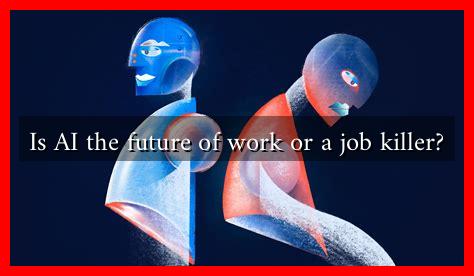-
Table of Contents
Is AI the Future of Work or a Job Killer?
The rapid advancement of artificial intelligence (AI) has sparked a heated debate about its implications for the workforce. While some view AI as a transformative force that will enhance productivity and create new job opportunities, others fear it may lead to widespread job displacement. This article explores both perspectives, examining the potential benefits and challenges of AI in the workplace.
The Promise of AI in the Workplace
AI technologies are increasingly being integrated into various sectors, offering numerous advantages that can enhance work processes and productivity. Here are some key benefits:
- Increased Efficiency: AI can automate repetitive tasks, allowing employees to focus on more complex and creative aspects of their jobs. For instance, chatbots can handle customer inquiries, freeing up human agents for more nuanced interactions.
- Data-Driven Decision Making: AI systems can analyze vast amounts of data quickly, providing insights that help businesses make informed decisions. Companies like Netflix and Amazon use AI algorithms to personalize user experiences and optimize inventory management.
- Enhanced Innovation: By automating mundane tasks, AI can foster a culture of innovation. Employees can dedicate more time to brainstorming and developing new ideas, leading to the creation of new products and services.
Case Studies: AI in Action
Several companies have successfully integrated AI into their operations, demonstrating its potential to enhance productivity:
- IBM: IBM’s Watson has been utilized in healthcare to assist doctors in diagnosing diseases and recommending treatments, significantly improving patient outcomes.
- Siemens: Siemens employs AI in manufacturing to predict equipment failures before they occur, reducing downtime and maintenance costs.
- Salesforce: Salesforce’s Einstein AI helps sales teams identify potential leads and automate follow-ups, increasing sales efficiency.
The Job Displacement Dilemma
Despite the advantages, the rise of AI raises valid concerns about job displacement. A report by McKinsey Global Institute estimates that by 2030, up to 375 million workers may need to switch occupational categories due to automation. Here are some sectors particularly vulnerable to job loss:
- Manufacturing: Automation and robotics have already replaced many assembly line jobs, and this trend is expected to continue.
- Retail: Self-checkout systems and online shopping platforms are reducing the need for cashiers and sales associates.
- Transportation: The development of autonomous vehicles poses a significant threat to jobs in trucking and delivery services.
Reskilling and Adaptation: The Path Forward
To mitigate the impact of AI on employment, reskilling and upskilling initiatives are essential. Workers must adapt to the changing job landscape by acquiring new skills that complement AI technologies. Here are some strategies:
- Education and Training: Governments and organizations should invest in education programs that focus on digital literacy and technical skills.
- Collaboration with Tech Companies: Partnerships between educational institutions and tech companies can help align curricula with industry needs.
- Promoting Lifelong Learning: Encouraging a culture of continuous learning can help workers stay relevant in an evolving job market.
Conclusion: A Balanced Perspective
The debate over whether AI is the future of work or a job killer is complex. While AI has the potential to enhance productivity and create new opportunities, it also poses significant challenges, particularly in terms of job displacement. The key to navigating this transition lies in proactive measures such as reskilling and fostering a culture of innovation. By embracing AI as a tool for enhancement rather than a threat, businesses and workers can work together to shape a future where technology and human talent coexist harmoniously.
For further reading on the impact of AI on the workforce, you can explore resources from the World Economic Forum here.


